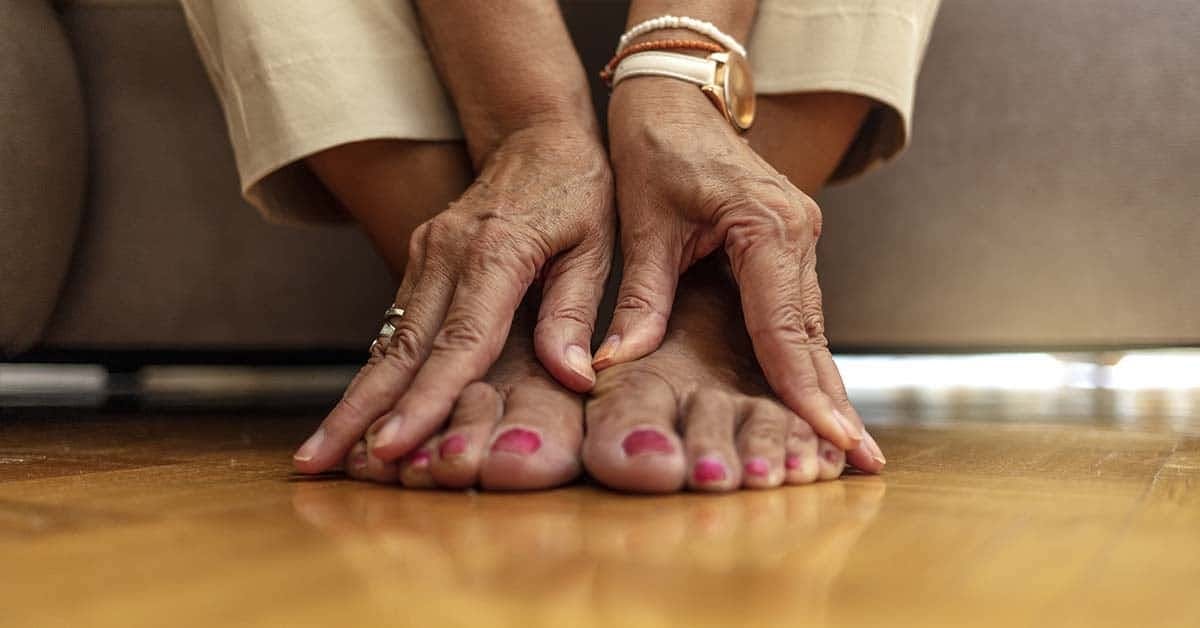Total Joint Care

Our joint care services focus on working with you as an individual to determine what options will help you achieve the best possible quality of life.
We can help you regain the freedom to participate in the activities that you enjoy. Our team has the expertise and experience to treat your condition, using the combination of techniques and technologies that are best suited to your particular needs.
Helping to set you on a path to healthy mobility and ongoing healthy living is our passion. We look forward to consulting with you soon.
What are joint injections?
Joint injections are medications delivered directly to your injured or damaged joint via a needle. At Spruce Health Group, the team safely performs joint injections using their unique Advanced Arthritis Relief Protocol (AARP) and the Genvisc 850 intra-articular system.
This Medicare-preferred alternative to knee replacement surgery uses fluoroscopy guidance to make sure the medication goes to the exact point of your injury or area of damage within the joint.
In most cases, your provider recommends visiting Spruce Health Group for once-a-week injections during your time in treatment. Over time, you should experience an improvement in symptoms like discomfort, pain, and joint stiffness that result from damage to the cartilage or soft tissues.
Genvisc 850 joint injections contain hyaluronate, a thick substance that can help lubricate your joints. With better lubrication, your damaged joint can move more smoothly and comfortably.
What can joint injections treat?
Joint injections can treat joint damage from osteoarthritis, particularly within your knees. Your provider might also recommend them for shoulder, elbow, wrist, ankle, or other joint pain. Osteoarthritis is the most common type of arthritis and develops when the cartilage in your joints breaks down over time because of wear and tear.
Your knees are especially prone to osteoarthritis cartilage degeneration because they bear a lot of your body weight. They’re also responsible for holding you up when you stand and keeping you stable and mobile as you walk or run. Healthy cartilage absorbs the shock of your movements, but osteoarthritis can result in pain, stiffness, or instability. Joint injections improve the joint’s lubrication for smoother, more comfortable movement.
“When I get my shot it DOESN’T hurt at all. And its really pain free. My knees are really mess up. They treat me like a person no number. While she is doing the injection Hannah keeps asking if I’m doing ok. Hannah makes sure your not in pain. Spruce Health Group is AWESOME they treat you like people. You all are AWESOME…”
Rhonda D. – 2021
What should I expect after joint injections?
Joint injections can help you avoid the prolonged and uncomfortable recovery of a joint replacement or repair surgery. However, there are some restrictions to follow. After each joint injection at Spruce Health Group, you should limit your activity for about 48 hours. Your provider may suggest that you avoid:
- Prolonged standing or walking
- Jogging or running
- Playing sports
- Lifting heavy objects
The swelling and discomfort might temporarily get more intense right after your injection. If it persists, you should call Spruce Health Group for additional guidance. For the best results, you should follow aftercare instructions and stay on schedule with your joint injections.
It may take around three rounds of injections before you notice an improvement in your osteoarthritis symptoms. For a more holistic approach to your treatment, the team may also recommend physical therapy and nutritional guidance.
If you have pain or stiffness in one or both of your knees or another painful joint because of cartilage damage from osteoarthritis, call Spruce Health Group for a joint injection consultation or book an appointment online today.

What is osteoarthritis?
Osteoarthritis, also called degenerative arthritis or wear-and-tear arthritis, is caused by overuse, repetitive movements, trauma, and/or general wear-and-tear on your joints. Symptoms occur when the cartilage in your joints that normally protects the ends of your bones breaks down or is worn away.
OA typically shows up in a single joint, often in the shoulder, hip, or knee, though it can occur in any joints that are used frequently in your work or daily life.
What are the symptoms?
OA causes generalized joint symptoms that can be confused with other types of arthritis. That’s why it’s best to see Spruce Health Group for a full exam to determine your exact diagnosis and treatments.
Common symptoms of OA include:
- Joint pain or tenderness
- Mild joint swelling
- Stiffness or decreased range of motion
- Symptoms that improve with movement
- Clicking or cracking sounds when the joint bends
- Pain that’s worse after movement or at the end of the day
It can take many years for OA to develop, so if you’re just starting to experience joint pain that doesn’t go away after 2-3 days, it’s time for an exam to determine the cause of your pain and the next steps you can take to prevent joint damage.
What are the possible complications of osteoarthritis?
If OA is left untreated, it can eventually lead to a total breakdown of the cartilage in the affected joint, meaning that your joint becomes bone-on-bone. In these cases, the symptoms become much worse, and surgery could be needed to relieve your discomfort and improve your joint function.
OA can also lead to a breakdown of bone near your joints that’s associated with osteoporosis. With osteoporosis, your bone becomes thinner and more fragile. This can make you vulnerable to fractures. If you have both OA and osteoporosis, your risk of fractures near your joints increases.
How is osteoarthritis diagnosed and treated?
Diagnosis of OA involves a consultation, physical exam, and X-rays. If your provider suspects you also have osteoporosis, they may order a bone densitometry test or a specialized X-ray called a DEXA scan to determine the density of your bones.
Treatment often involves lifestyle changes, such as losing weight or wearing a brace over the involved joint while you’re working or exercising, as well as medications to relieve pain and inflammation. Some medications can also help prevent the breakdown of cartilage, which can help preserve your joints.
In some cases, your Spruce Health Group provider might recommend PRP treatments to help stimulate healing in the affected area.
To discuss osteoarthritis treatments, call Spruce Health Group or book a visit online today.

What is shoulder pain?
Shoulder pain is a common musculoskeletal condition that can affect one or both shoulders. Your shoulder joints are strong and capable of a wide range of motion, but illness or injury can hamper your ability to move freely, resulting in significant pain or discomfort.
Each of your shoulder joints features three bones: the humorous, the clavicle, and the scapula. A layer of cartilage cushions them and supports two joints, the acromioclavicular joint, and the glenohumeral joint. All of these components work in coordination to move your arm up, down, around, and from side-to-side.
Anyone can experience shoulder pain, but it’s particularly common in people who are 60 or older. This is because the soft tissues that support your shoulder begin to wear away with age.
What are some common causes?
Shoulder pain can occur for a variety of reasons, but the leading cause is rotator cuff tendinitis. Other health problems that may result in shoulder pain include:
- Osteoarthritis
- Torn cartilage
- Torn rotator cuff
- Pinched nerve
- Frozen shoulder
- Broken shoulder
- General wear-and-tear
- Sports or work-related injury
How is shoulder pain diagnosed?
Your Spruce Health Group provider conducts a thorough physical exam, reviews your medical history, and asks about your symptoms and lifestyle. During your exam, they test your shoulder’s range of motion and stability.
If these measures don’t provide enough information, your provider may order an MRI or X-ray. These diagnostic imaging procedures provide a closer look at your bones, tendons, and ligaments.
How is shoulder pain addressed?
Treatment depends on the severity of your symptoms and the underlying cause. Whenever possible, the team at Spruce Health Group uses minimally invasive, integrative treatments to relieve pain and improve mobility.
Your provider might recommend treatment with:
- Joint injections
- Physical therapy
- Platelet-rich plasma (PRP) injections
- Tissue supplementation
You might also benefit from healthy lifestyle changes, such as eating a balanced diet, exercising regularly, and managing your stress levels. Your provider might even recommend a combination of several treatments.
Ultimately, the goal is to limit pain, improve mobility, and restore your quality of life.
Don’t let pain prevent you from living an active, mobile lifestyle. To schedule an appointment at Spruce Health Group, call the nearest office and speak with a team member or book a consultation online today.

What kinds of injuries could affect my elbow?
The team at Spruce Health Group has successfully treated elbow pain and other elbow injuries and disorders including:
- Fractures
- Tendon strains and tears
- Ligament sprains and tears
- Tennis elbow (lateral epicondylitis)
- Golfer’s elbow (medial epicondylitis)
- Arthritis
- Elbow (olecranon) bursitis
- Elbow instability
The Spruce Health Group team also excels at treating complex trauma involving some or all of the structures in your elbow.
How does the elbow work?
Your elbow consists of three bones:
- Humerus
- Radius
- Ulna
The humerus is your upper arm bone, the radius and ulna are the bones that make up the forearm, and your elbow joint is where they meet. The bicep and tricep muscles in your upper arm control most of your elbow movements.
There’s also a large nerve running through your elbow. If you’ve ever bumped your “funny bone,” what you actually hurt is the ulnar nerve.
Your elbow plays a vital role in positioning your hand correctly as you go through your daily life. The joint is vulnerable to acute injuries but can also suffer as a result of over-compensating for damage in other parts of your body.
The compassionate experts at Spruce Health Group can identify the injury you’re dealing with and put a treatment plan together that will get you back to your usual active self.
How is elbow pain diagnosed?
To establish the correct course of treatment, your provider at Spruce Health Group first needs to assess your elbow. They examine the joint, review your medical history, and discuss the symptoms you’re experiencing as well as your general health.
The next stage is diagnostic testing, which could involve an X-ray, MRI scan, CT scan, or nerve function studies. When your provider knows what’s causing your elbow pain, you can begin your treatment.
How is elbow pain treated?
Your provider will usually recommend conservative care as a better option than surgery, at least to begin with. Initial treatments for elbow pain could include:
- Splinting
- Bracing
- Casting
- Medications
- Physical therapy
- Steroid injections
- Regenerative medicine
In most cases, conservative approaches to elbow pain are successful. If, however, your pain isn’t improving, your provider might recommend elbow surgery.
If you’re living with elbow pain, call Spruce Health Group to schedule a consultation or book an appointment online today.

What causes ankle pain?
Our team can help you discover the cause of your ankle pain. Once they find the cause, they plan your treatment effectively.
Your ankles are the joints connecting your feet to your legs. They’re responsible for supporting the majority of your body weight when you stand, walk, and run.
Like other joints, your ankles include bone, cartilage, and soft tissue like muscles, ligaments, and tendons. Any of these structures can obtain damage from an injury, a degenerative disease, or general age-related wear-and-tear. Specific common causes include:
- Bone fractures
- Tendinitis (tendon inflammation)
- Nerve compression
- Osteoarthritis
- Gout
- Joint infection
- Poor structural alignment
Does ankle pain come with any other symptoms?
Ankle injuries and degenerative damage often come with symptoms other than pain and discomfort. Additional symptoms can help your provider make an accurate diagnosis, along with imaging tests and other diagnostic tools. When describing your pain to the team at Spruce Health Group, you should let them know if you also experience:
- Tingling or burning
- Instability
- Redness and swelling
- Stiffness
- Bruising
- Trouble standing or walking
If your ankle pain is mild, it might go away without treatment. You should book an appointment at Spruce Health Group if you have trouble standing or walking, if the pain lasts for a long time despite your attempts to care for it at home, or if you notice extreme swelling and bruising around the joint.
Which procedures should I consider for ankle pain?
Spruce Health Group is proud to offer several approaches to relieve ankle pain. After an initial consultation and evaluation, your provider creates an individualized plan to relieve your pain and instability with long-term results. Your personalized plan might include:
- Bracing
- Physical therapy
- Platelet-rich plasma (PRP) injections
- Tissue supplementation regenerative therapy
- Joint injections
- Weight loss
Your provider helps you book follow-up appointments so they can evaluate your injury or condition’s improvement over time. They can also offer you nutritional guidance to help alleviate inflammation causing pain in your ankle and can answer all your questions along the way.
How should I care for my ankle at home?
Before you visit Spruce Health Group or between appointments, there are ways to improve your ankle pain at home to improve your overall treatment outcome. Using heat and ice therapy, keeping your ankle elevated while at rest to control swelling, and taking over-the-counter anti-inflammatory medications may all help.
To review all of your options, call Spruce Health Group, or book a consultation online today.

What is wrist pain?
Wrist pain is a common musculoskeletal problem that affects people of all ages. Sometimes, it occurs due to a sudden injury like a sprain or fracture; other times, it’s a result of chronic, underlying health problems like carpal tunnel syndrome or osteoarthritis.
If you regularly experience wrist pain and it doesn’t respond to conservative measures of care like rest, ice, or over-the-counter painkillers, don’t wait to seek professional medical help.
What are the symptoms?
The symptoms vary and depend on the underlying cause. Some people experience pain that’s dull and throbbing; others experience pain that’s sharp, stabbing, or that causes pins-and-needles sensations.
The precise location and severity of your wrist pain can help your Spruce Health Group provider determine the underlying cause.
What are some common causes?
The team at Spruce Health Group regularly diagnoses and treats pain caused by:
- Sudden impact injuries
- Repetitive stress injuries
- Osteoarthritis
- Rheumatoid arthritis
- Ganglion cysts
Another common cause of wrist pain is Keinbock’s disease. This condition causes the collapse of one or more small bones in your wrist. This occurs if the blood supply to your wrist becomes compromised.
Who is at risk of experiencing wrist pain?
Wrist pain affects everyone, but certain factors can increase your risk, including playing sports, working a job that requires repetitive movements, or living with a chronic health condition like diabetes or obesity.
How is wrist pain diagnosed?
Your Spruce Health Group provider reviews your medical history, asks you about your lifestyle and symptoms, and conducts a thorough physical exam. During the exam, your provider checks your wrist for tenderness, swelling, or deformities and asks you to move your wrist to observe your range of motion.
If these measures don’t provide enough information to make a diagnosis, your provider might also order diagnostic testing, or an X-ray or MRI to get a closer look at the bones, joints, and soft tissue structures that support your hand and wrist.
How is wrist pain treated?
Treatment depends on the severity of your symptoms and the underlying cause. Whenever possible, the team at Spruce Health Group uses conservative, integrative treatments, including:
- Joint injections
- Bracing
- Physical therapy
- Platelet-rich plasma (PRP) injections
- Tissue allografts
You might benefit from one of these treatments or a combination. Ultimately, the goal of treatment is to ease pain, encourage mobility, and improve your quality of life.
To explore your treatment options, schedule an appointment at Spruce Health Group. Call the nearest office and speak with a team member or book a consultation online today.
